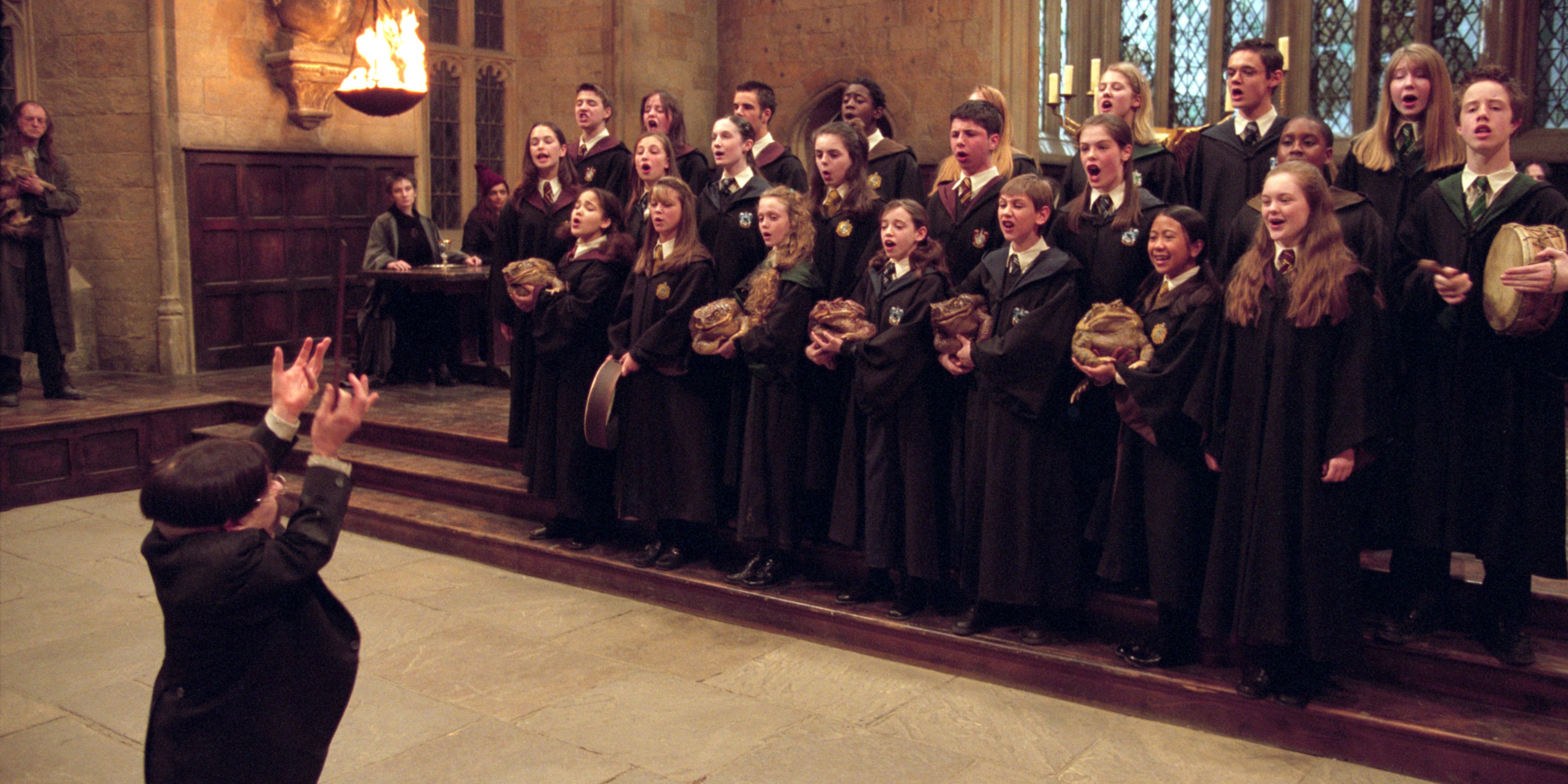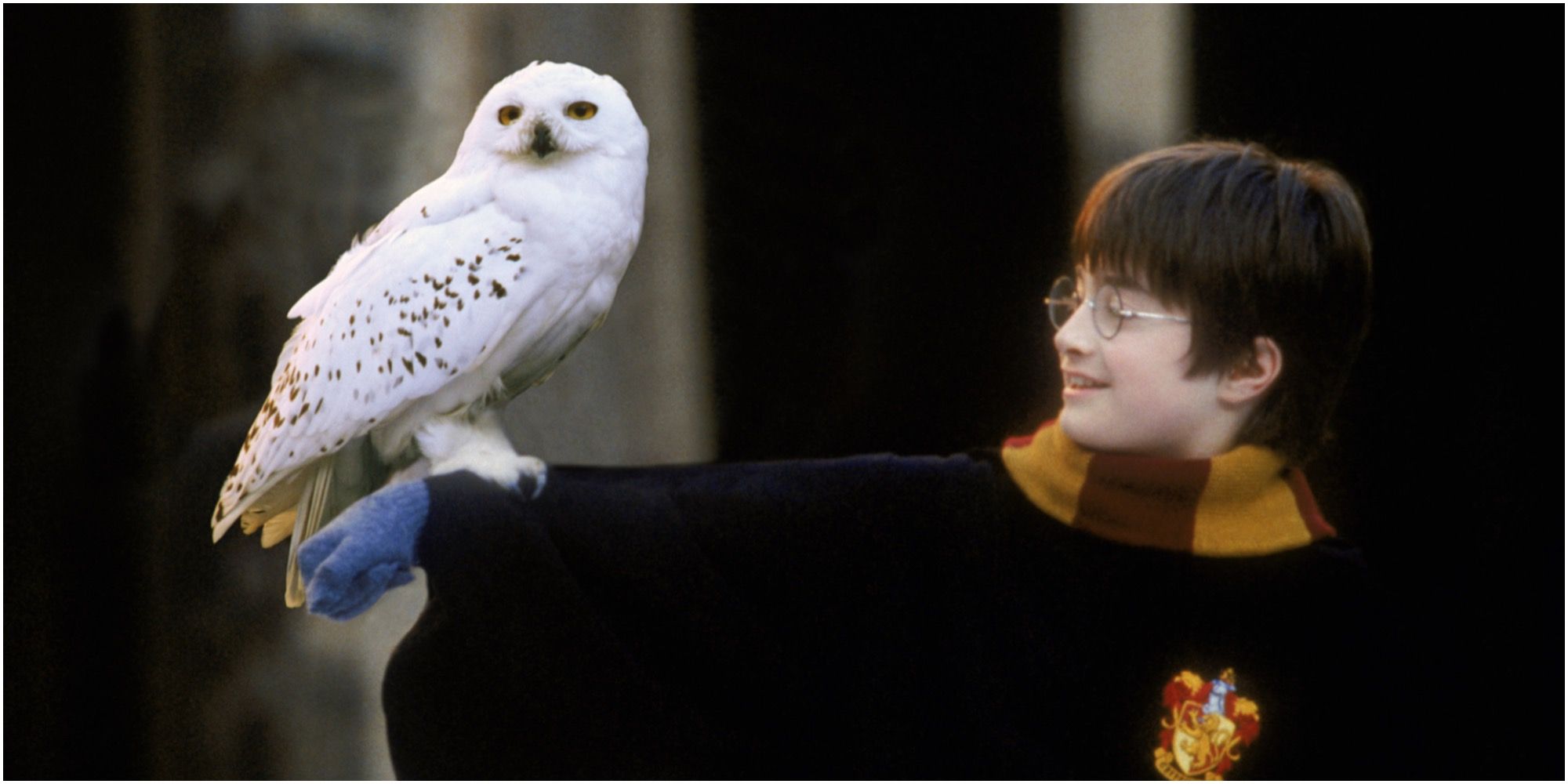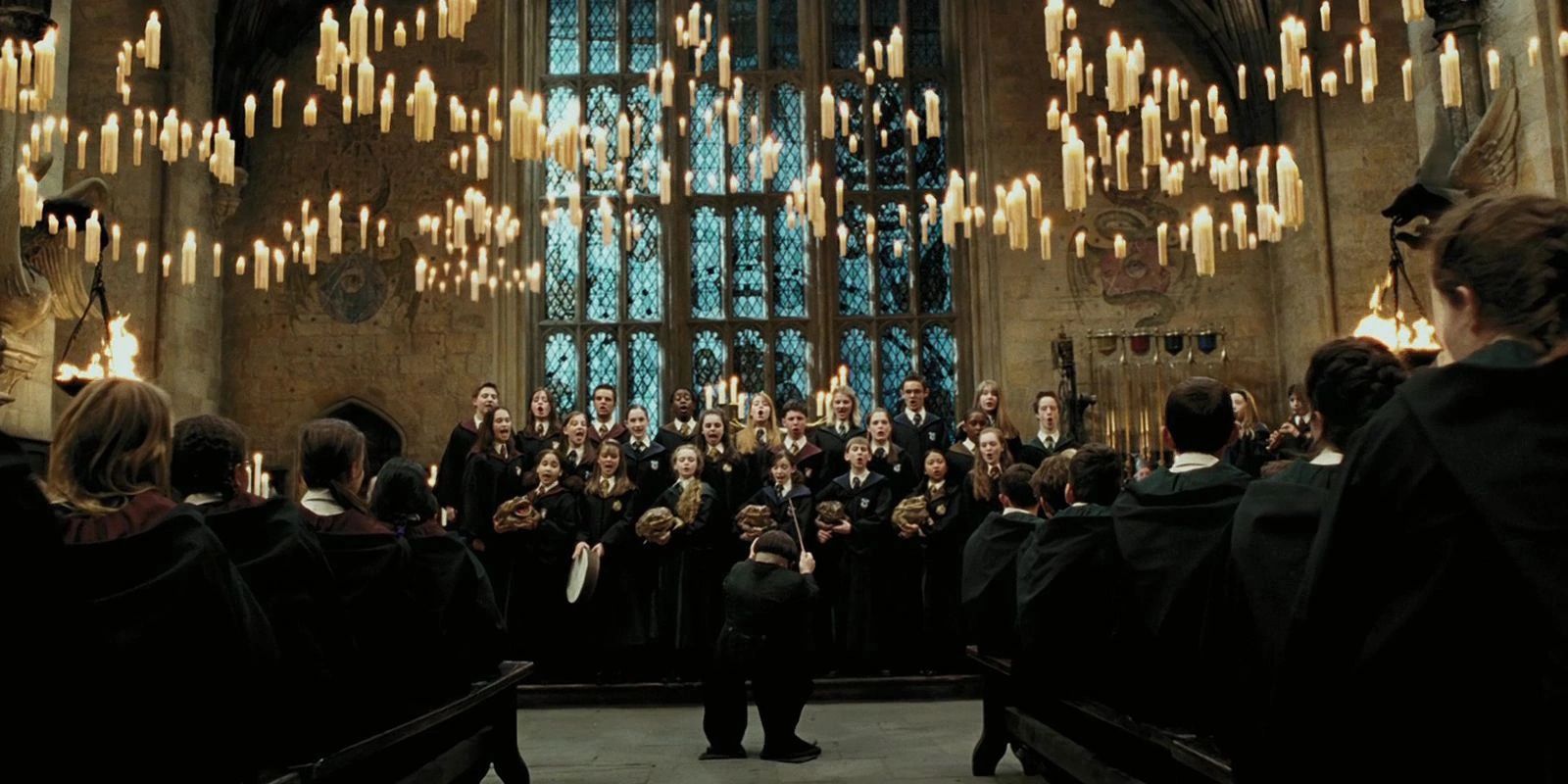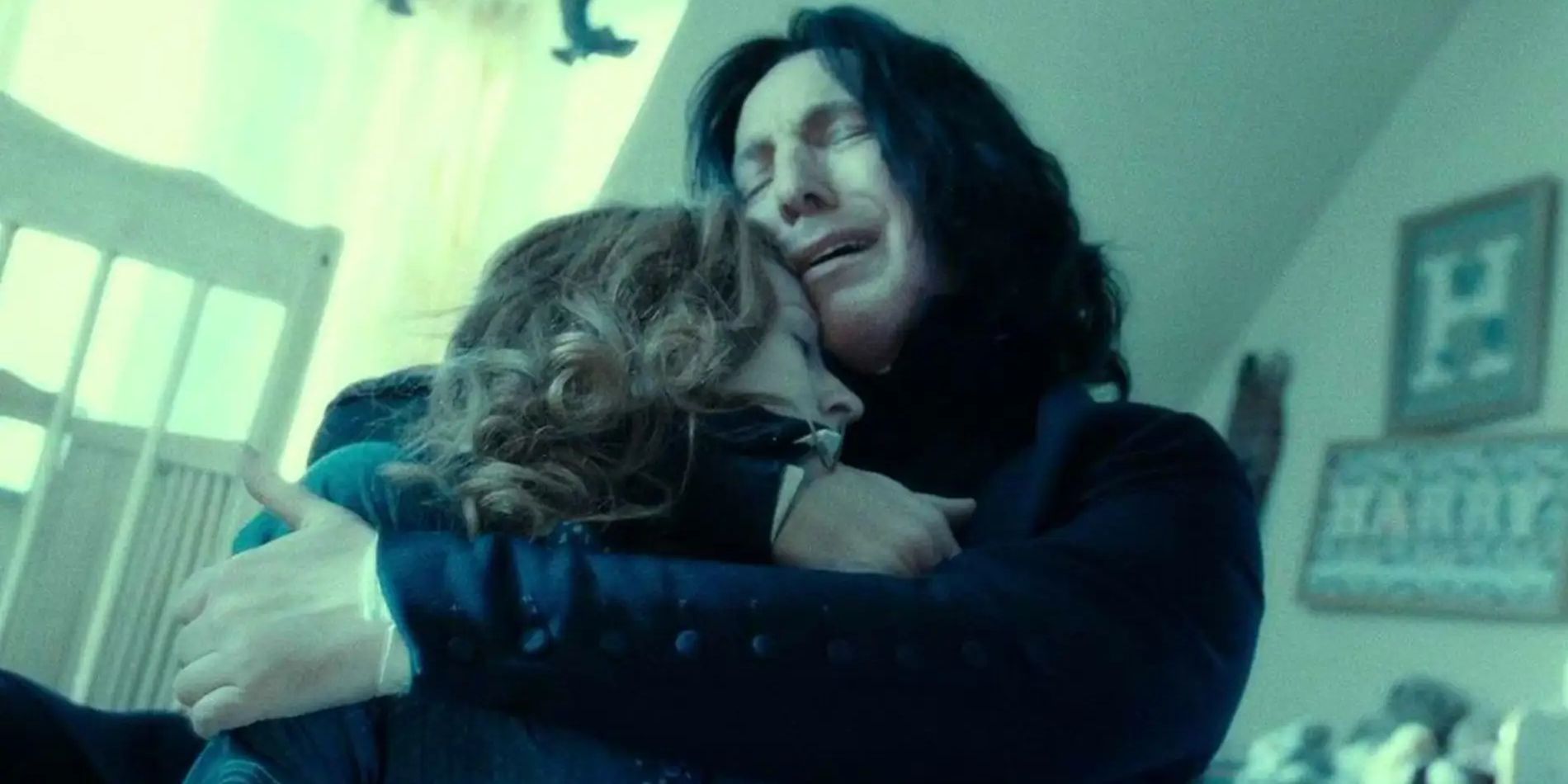Harry Potter has garnered fans worldwide with its tales of magic and good versus evil. The movies that were spawned form the series of books owe much of their success to numerous elements, from the brilliant young cast to the ambitious storytelling choices. However, one aspect of Harry Potter that deserves more attention is the iconic music. With its trills, crescendos and up-tempo melodies, the immortal soundtrack of Harry Potter adds to the awe and magic of the story.
The different musical approaches of the four composers — John Williams, Patrick Doyle, Nicholas Hooper, and Alexandre Desplat — along with their unusual choice of instruments (like the celesta or contrabassoon) shape each film in the Harry Potter franchise in a unique manner, while also serving as agents of continuity in the story. They reflect the changes in the characters and themes of each narrative, while also providing hints about future events long before they are revealed to the audience.
Hedwig’s Theme
‘Hedwig’s Theme’ is a leitmotif composed by the iconic John Williams. It permeates throughout the seven films and is easily one of the most recognizable themes in the history of cinema. This minor-key waltz, with its quirky harmonies and sudden chromatic turns, is fittingly played on the celesta, in an attempt to capture the childlike wonder of the magical world.
It is named after Harry’s pet owl, which does not appear until much later in the first movie. However, the theme is played continuously — to the point of bombardment — before that. While the constant repetition helps it to stick, it is how and when Williams uses this theme that depicts something more.
Before the central character appears in Harry Potter and the Sorcerer’s Stone, a few of the other main characters are introduced to the audience in a series of magical occurrences: a striped cat changes into Professor McGonagall; Professor Dumbledore uses an unknown object to turn out the streetlamps; and Hagrid arrives on a flying motorcycle. All these instances of magic are accompanied by an excerpt from ‘Hedwig’s Theme’. They place an infant Harry at the doorstep of the Dursley’s home. Ten years later, when Harry wakes up in a cupboard under the stairs, all music has been silenced. In fact, it does not return until much later, when Harry begins to discover his own magical abilities.
For instance, when he visits the zoo, he apologizes to a boa constrictor for his cousin Dudley Dursley, who had disturbed it by his relentless tapping and yelling. When the snake replies to Harry, the music returns. From this point onwards, the film keeps alternating between ‘Hedwig’s Theme’ or complete background silence.
The Hogwarts School of Witchcraft and Wizardry sends Harry a letter about his admission but the Dursleys, who are vehemently opposed to anything that they deem as not “normal”, destroy this. After this, more and more owls arrive bearing the same letter, which Vernon Dursley continues to destroy. This entire unfolding drama is set to the ‘Hedwig’s Theme’, which gets more and more persistent each time with louder tones and fewer interruptions until it is finally revealed to Harry that he is a wizard.
An early precedent is set in the film series that ‘Hedwig’s Theme’ is a musical projection of magic. However, over the course of the film, it also becomes a symbol of hope and courage. It plays more than just a transitional role by marking moments of critical conflict, such as when Harry defeats Voldemort at the end of the first two movies through the power of magic.
Similarly, in Harry Potter and the Chamber of Secrets, it is expanded with the use of more orchestral instruments, calling attention to the world of magic in a more captivating manner. However, as a symbol of hope, the theme is used less frequently with each successive movie, causing uncertainty about the characters’ fates. In Harry Potter and the Prisoner of Azkaban, the theme is first heard solely playing on the celesta, followed by string instruments, which hint at the shifting tone of the story.
The soundtrack of Harry Potter and the Goblet of Fire was composed by Patrick Doyle, who adjusted ‘Hedwig’s Theme’ to fit in with the increasingly darker themes of the film. While providing a sense of familiarity, the new quickening tempo of the theme foreshadows Voldemort’s return in this installment.
In the fifth and sixth movies, composer Nicholas Hooper includes a portion of ‘Hedwig’s Theme’ in other music pieces, the most notable one being ‘Ginny’, which is played when Harry’s relationship with her develops in Harry Potter and the Half-Blood Prince — giving the impression that his feelings for her are closely related to his sense of magic. ‘Hedwig’s Theme’ is also slowed out and cut down whenever it is played, again indicating the underlying dramatic tension.
In Harry Potter and the Deathly Hallows (both parts 1 and 2), Alexandre Desplat uses the theme only a handful of times. It features only four times in the second part and does not even complete itself. For instance, when Ron and Hermione go to the Chamber of Secrets, the original theme is played, reminding the viewers of the bravery shown here the last time they had seen this place. The melody stops abruptly, however, as if the last victory has lost significance due to the ongoing battle of Hogwarts. This fragmented version of ‘Hedwig’s Theme’ is played again later on when Harry walks towards his death in the Forbidden Forest. It is never heard again after that.
This, once again, reflects how the pure innocence and hope shown in the first movie has been overshadowed by the dark magic of Voldemort and his Death Eaters.
Interestingly, the theme ‘Gilderoy Lockhart’ used in Harry Potter and the Chamber of Secrets is a jagged variation of ‘Hedwig’s Theme’. While the latter speaks of courage and optimism, this musical caricature is a symbol of the exact opposite, depicting his true character: a cowardly man hidden beneath the arrogance.
Double Trouble
Conducted by Professor Filius Flitwick, the Frog Choir is a singing group of students from Hogwarts. In Harry Potter and the Prisoner of Azkaban, they perform the song ‘Double Trouble’ (also known as ‘Something Wicked This Way Comes’) at the Welcoming Feast at Hogwarts while holding toads. Williams borrowed a few lines for this song from a scene in William Shakespeare’s Macbeth, which is also a story about prophecies and death. The leitmotif is prominently repeated in the third movie, much more than ‘Hedwig's Theme’, thus indicating its significance. It captures the quirkiness, mischief and slightly frightening themes of the movie.
Lily’s Theme
In Harry Potter and the Deathly Hallows, when Harry collects Severus Snape’s past memories just moments before he dies, the tune called ‘Lily’s Theme’ is played in the background. This technique of musical foreshadowing reveals a connection between Snape and Lily much before Harry (or the audience) finds out. The final time ‘Lily’s Theme’ is played in the film is when Harry sees some form of his mother when he uses the Resurrection Stone right before he heads towards the Forbidden Forest to be killed by Voldemort.




